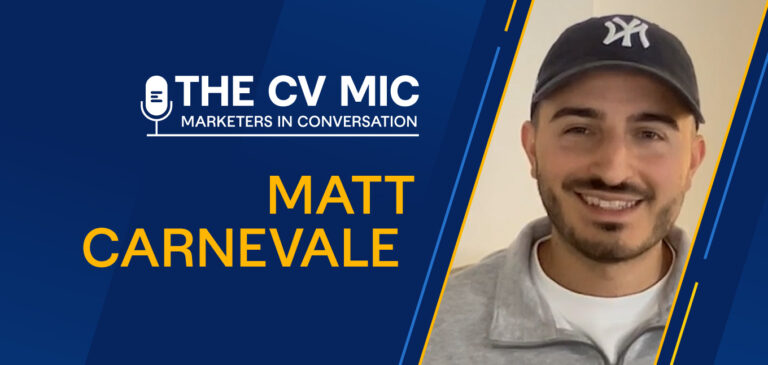Managing a content team of freelancers, fractional talent, and full-time staff is no easy feat. Juggling different time zones, limited communication windows, varying areas of expertise, and uneven skill levels significantly complicates things.
A 2024 study by Gallup revealed that only 45 percent of employees strongly agree that they know what is expected of them at work, which can be a key sign of misalignment.
The good news?
Setting clear expectations for employees, outsourced talent, and fractional management teams removes confusion, streamlines collaboration, and maximizes everyone’s potential and investment. To help you get there, we’ll break down time-tested frameworks for identifying goals, creating communication rhythms, and establishing quality standards — so every team member stays aligned and achieves the outcome you’ve envisioned from the start.
Why Clear Expectations Matter
Unclear expectations across content teams lead to miscommunication and other issues that can snowball over time. Failing to establish direct guidance can also result in:
- Budget overruns that are caused by duplicate work or work going off track.
- Inconsistent content quality from your team members.
- Increased revisions that eat into your team’s time and impact morale.
- Missed deadlines and delays due to misaligned priorities.
- Frustrated team members who don’t have the same idea of what “good” looks like.
- Inefficient talent management that leads to wasted resources.
Setting team expectations from the outset produces a shared understanding that fosters trust, consistency, efficiency, and the expected results.
How to Establish Universal Standards Across Your Team
Establishing universal standards provides your entire team — whether fractional, freelance, or full-time — a clear framework for producing high-quality work. Below are key best practices for setting expectations that align everyone and elevate your content operations.
1. Create Content Quality Benchmarks that Work for Everyone
If you want to produce high-performing, on-brand content, everyone on your team needs to understand what quality piece of content looks like. This is especially important when managing freelancers or part‑time team members who don’t have the same access to resources as your in‑house staff.
One of the effective content team management best practices is to create documented benchmarks that apply to all your members, starting with the following:
- Brand voice, tone, and style guide expectations. Every contributor should learn how your brand speaks, sounds, and engages. Provide solid examples and approved messaging.
- Content formatting and technical specifications. Standardize key content elements, such as image sizes, heading hierarchy, internal link formatting, search engine optimization (SEO) requirements, and call-to-action placement to guarantee consistency across all content.
- Design and visual asset rules. Provide dos and don’ts for using your brand colors, logos, and fonts, especially when working with freelancers and managed content creation service providers.
- Review and approval process. Specify who reviews content (including content quality assurance), what feedback loops to follow, how comments should be delivered, and what’s required for final approval. Doing so minimizes rework and maintains smooth workflows.
2. Set Communication Protocols to Align Your Team
Without strong communication protocols, messages are missed, projects stall, and timelines slip. That’s why establishing consistent systems that guide how your team communicates across project types and roles is crucial.
Start by:
- Setting standards for how quickly content operations team members should respond to messages.
- Specifying when team members should use Slack, emails, video calls, or project management tools, depending on the task’s complexity or urgency.
- Scheduling regular syncs without overloading calendars and clarifying who needs to attend which meetings and why.
- Building weekly or milestone-based check-ins to spot issues early or proactively, especially for multi-phase or long-term projects.
- Designing feedback loops that work for everyone via live reviews or shared docs for seamless in-house contributors or remote marketing team management.
- Using lightweight tools to track progress and highlight bottlenecks without requiring constant status updates.
Communication protocols govern when and how people communicate, creating a more focused, accountable, and collaborative environment for your content team.
3. Define Success Metrics and KPIs Upfront
One of the quickest ways to derail a content project is to assume that everyone shares the same definition of success. To keep team members on the same page, design measurable goals before work begins. At project kickoff, demonstrate what success looks like for everyone in your content marketing team, including the following:
- Specific key performance indicators (KPIs) tied to your expected outcomes, rather than just deliverables. These can include engagement metrics (such as time on page, social shares, or comments), SEO performance (keyword rankings or organic traffic), content accuracy and brand alignment, turnaround time, and even revision rates.
- Evaluation criteria that are fair and transparent across all your content team’s roles.
- Accountability systems that don’t depend on constant oversight (micromanagement).
Making your goals known from the start reduces confusion and revision cycles, while giving your content team members a target to aim for. It also ensures objective and efficient performance optimization and tracking, so every contributor, regardless of employment type, knows how their work will be assessed and why it matters.
4. Build a Seamless Onboarding Process for Your Talent
A smooth onboarding process sets the tone for how your content team will collaborate and perform. Whether you’re onboarding fractional talent for the quarter or bringing in a freelancer for a one-off project, every contributor must have the right context to succeed.
To start, outline essential information that every team member should receive to do their part effectively and efficiently, including:
- Your brand voice and style guide (including updated or revamped brand guidelines)
- Target audience personas
- Project timelines and workflows
- Content goals and KPIs
- Communication protocols and tools
If you work with external talent, developing a brand kit could streamline the onboarding process. Include access to your editorial calendar, high-performing content examples, and a quick-start guide to your content review process. Consider tools such as Notion pages or Loom videos to accelerate brand immersion without the need for constant spoon-feeding.
Internally, you can build a hub for ongoing resources and support. The hub can be a centralized location where team members can access past projects, frequently asked questions, templates, and brand assets. This would minimize confusion and reduce lengthy back-and-forth communication, ensuring seamless in-house or remote marketing team management.
Remember that different roles require various levels of context and direction. For instance, a freelancer may prefer a robust content or design marketing brief with minimal meetings. On the other hand, a full-time team member may require deeper collaboration and integration.
Tailor your onboarding to suit each working style. This way, you can offer support without micromanaging, autonomy with clear expectations, and creative freedom within well-defined guardrails.
Your Action Plan for Better Team Expectations and Results
Setting team expectations is the foundation of a high-performing content team. From developing universal content quality assurance benchmarks and communication protocols to specifying success metrics and tailoring onboarding for all types of contributors, each step helps organize your team and improve results.
Do you need support finding and managing freelancers, content creators, and contributors?
Talk to an expert content strategist at ClearVoice today.
ClearVoice can help you scale your content creation and marketing operations with vetted freelance talent, strategic guidance, and managed content solutions designed to fit your workflow.







